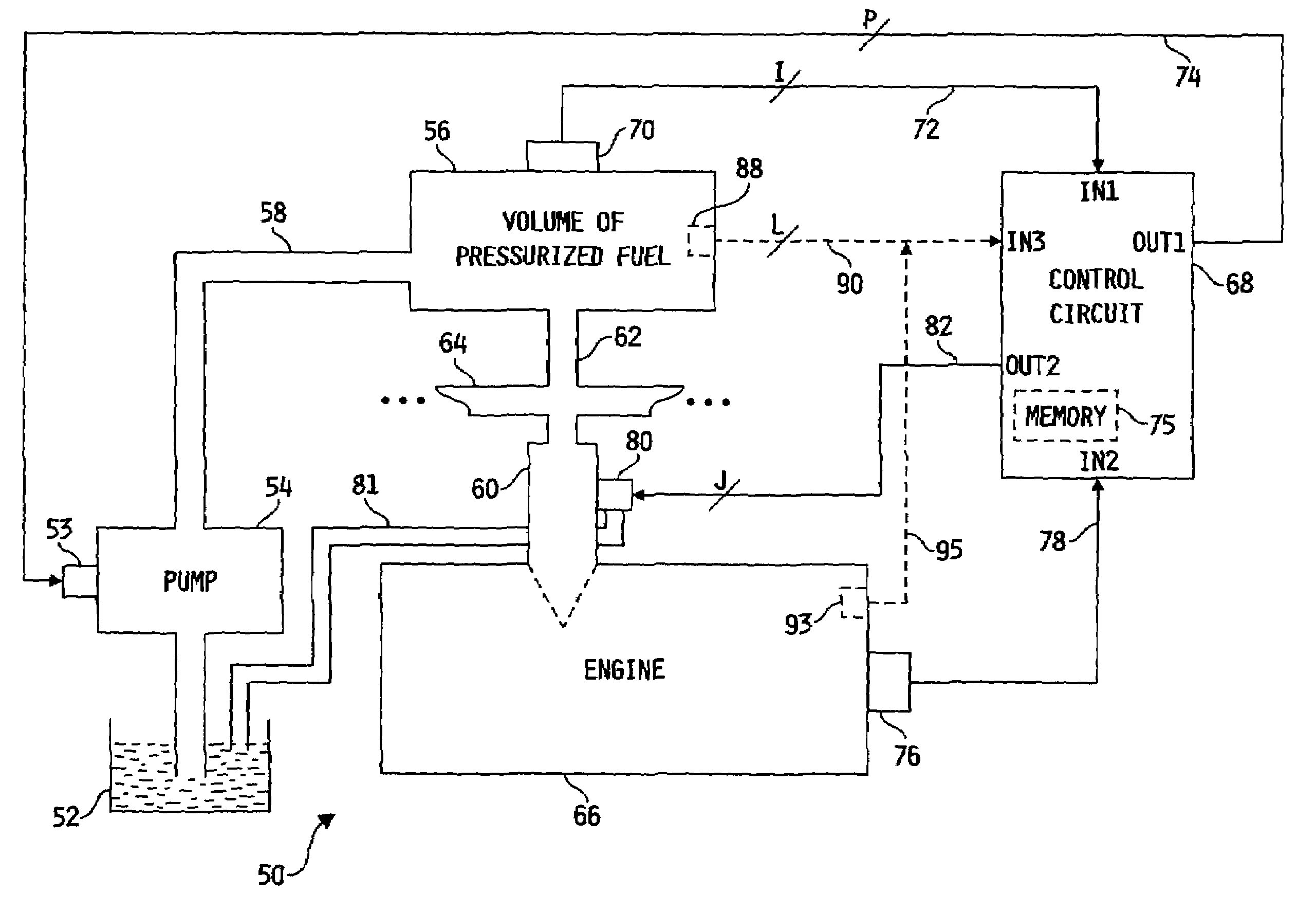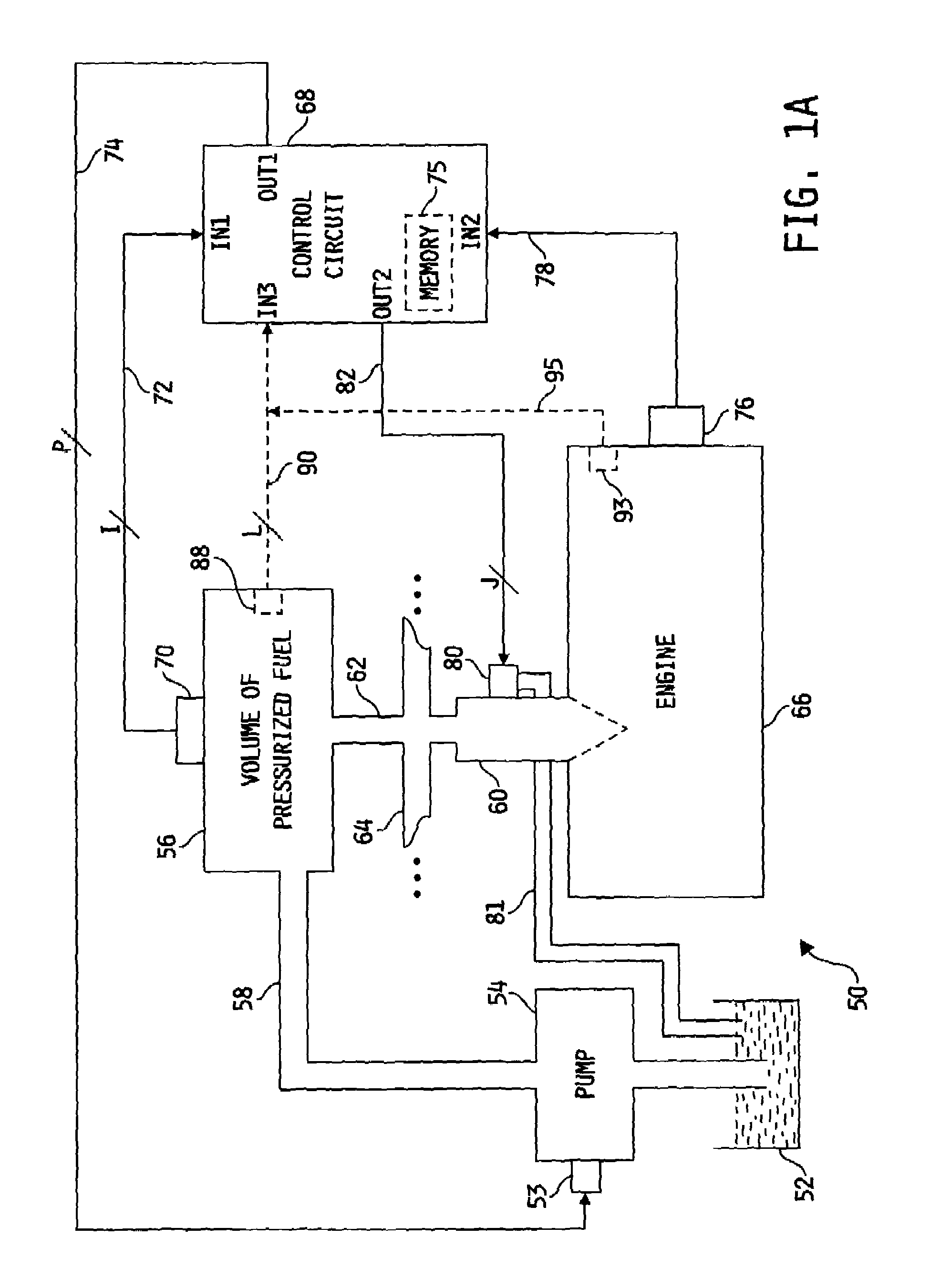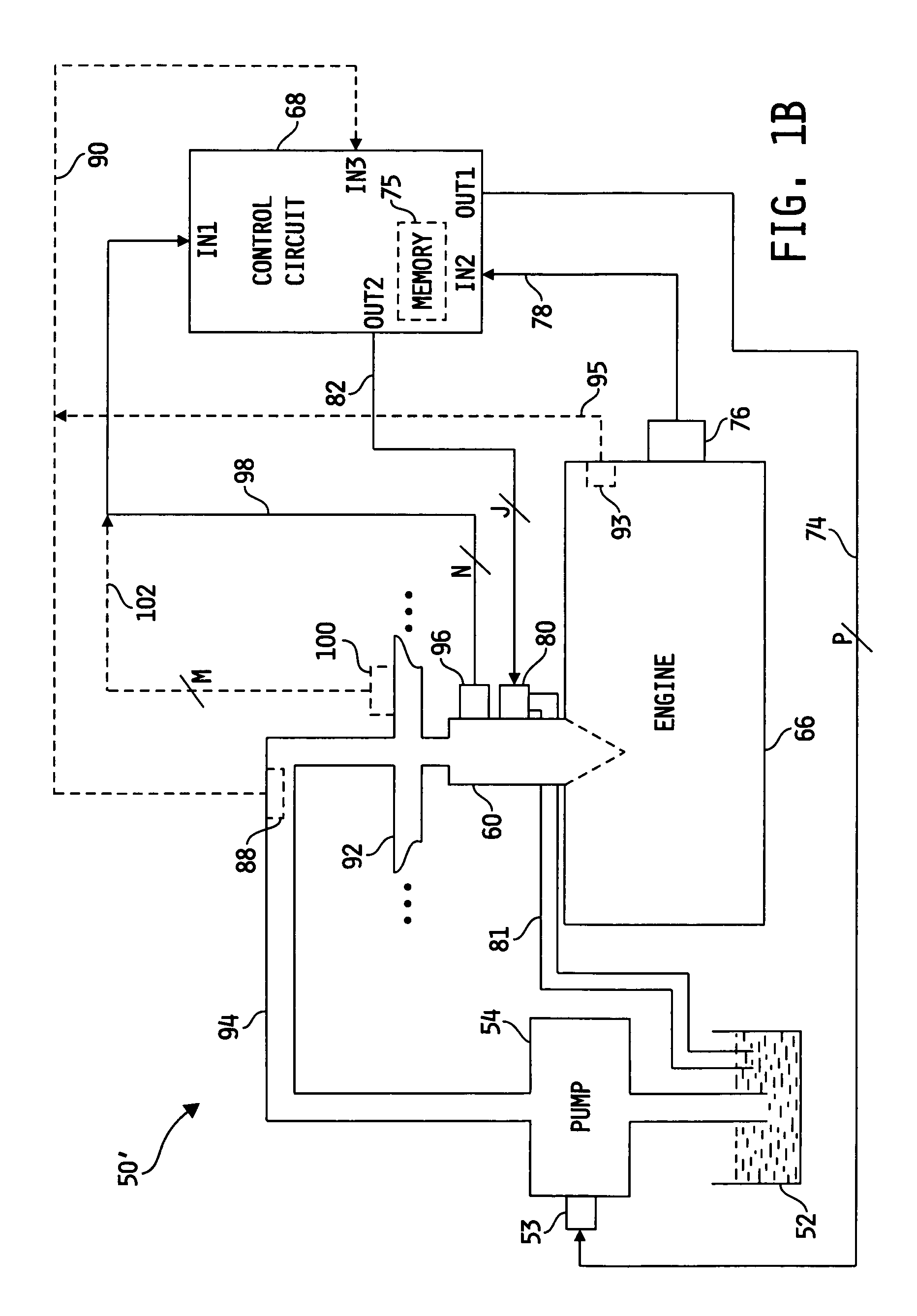System for estimating a quantity of parasitic leakage from a fuel injection system
a fuel injection system and parasitic leakage technology, applied in the direction of fluid tightness measurement, electrical control, instruments, etc., can solve the problems of inability to accurately estimate the quantity of parasitic leakage from the fuel injection system, the difficulty of implementing conventional control approaches such as open-loop look-up tables, and the cost of traditional manufacturing approaches to improve performan
- Summary
- Abstract
- Description
- Claims
- Application Information
AI Technical Summary
Benefits of technology
Problems solved by technology
Method used
Image
Examples
Embodiment Construction
[0050]For the purposes of promoting an understanding of the principles of the invention, reference will now be made to a number of illustrative embodiments shown in the drawings and specific language will be used to describe the same. It will nevertheless be understood that no limitation of the scope of the invention is thereby intended.
[0051]Referring now to FIG. 1A, one preferred embodiment of an electronic fuel control system 50, in accordance with the present invention, is shown. Fuel control system 50 includes a source of fuel 52; e.g. diesel engine fuel, having an inlet port of a fuel pump 54 in fluid communication therewith. In one embodiment, fuel pump 54 is a high pressure pump configured to supply high pressure fuel from fuel supply 52, which may typically be a low pressure fuel supply pump operable to supply low pressure fuel from a fuel source to,fuel pump 54, to at least one outlet port thereof in a cyclic fashion. It is to be understood, however, that the present inven...
PUM
 Login to View More
Login to View More Abstract
Description
Claims
Application Information
 Login to View More
Login to View More - R&D
- Intellectual Property
- Life Sciences
- Materials
- Tech Scout
- Unparalleled Data Quality
- Higher Quality Content
- 60% Fewer Hallucinations
Browse by: Latest US Patents, China's latest patents, Technical Efficacy Thesaurus, Application Domain, Technology Topic, Popular Technical Reports.
© 2025 PatSnap. All rights reserved.Legal|Privacy policy|Modern Slavery Act Transparency Statement|Sitemap|About US| Contact US: help@patsnap.com



